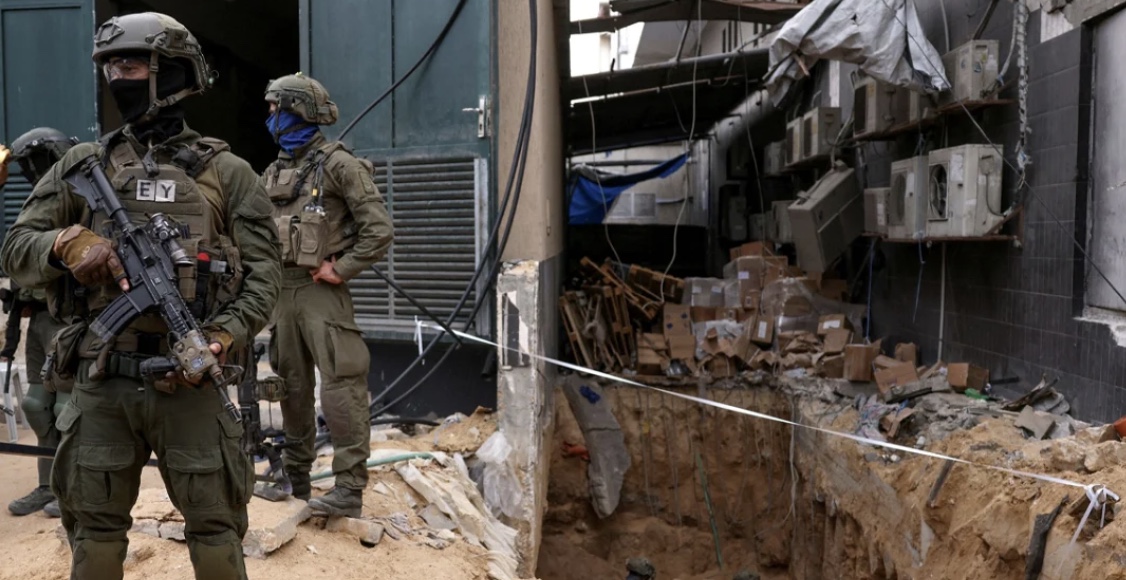After the killing of three hostages due to a sensational mistake, the Israeli military continues to prepare the plan to flood the underground tunnels that run for 500 kilometers throughout Gaza. The flooding will also lead to the death of over one hundred hostages still hidden among those tunnels. Israeli public opinion is shocked by the accidental killing of the three hostages by the IDF, making Netanyahu's policies increasingly unpopular who said about the flooding of the tunnels: "whatever the cost". The consequences for the Israeli prime minister could be disruptive, decreeing the end of his political era: this is also because American intolerance is increasing, which would like the military operations in Gaza to end on December 31st.
By Massimiliano D'Elia
Sea water is about to partially submerge the metaphorical Gaza subway, the 500 kilometer tunnel network under Sriscia. An underground labyrinth used by Hamas for surprise attacks which has become a problem for the Israeli army which, after two months of ferocious fighting, is still unable to put an end to Operation Cast Lead.
Initially, the IDF soldiers (Israeli defense forces) used advanced technologies such as drones, robots and sensors to locate the entry and exit points of the tunnels, as well as members of Hamas' military wing. Around 300 tunnels have been destroyed since the start of the war but hundreds more remain active, causing daily casualties among the ranks of Israeli soldiers.

An ideal and definitive solution has not yet been found against this persistent threat. The Israeli army recently opted to flood the tunnels after carrying out various tests to evaluate their effectiveness. He thus installed five pumping stations on a beach near the al-Shati refugee camp, in the northern Gaza Strip.
The same solution was adopted in 2015 by Egypt when the tunnels connected to the Gaza Strip were flooded.
The operation, however, puts the hostages in danger, expertly held by Hamas in different places right under the network of tunnels that Israel wants to flood. The military says that all precautions will be taken to determine the location of the hostages before the start of operations. In addition to the risk for the hostages, there is another that concerns the threat to Palestinian water resources and crops due to the salt water that would permeate the entire subsoil of Gaza.
In summary, the Israeli army adopts a simple strategy but with significant implications to address the threat of underground tunnels, with relevant humanitarian and environmental consequences for the entire region.
Three hostages killed accidentally
Israeli military forces have accidentally killed three Israeli hostages, mistakenly mistaken for militants, during fighting in Shujaiyeh, Gaza. The incident sparked protests, prompting the government to step up efforts to free the remaining hostages. The civilians killed were Yotam Haim, Samer Talalka and Alon Shamriz, abducted on 7 October. The IDF said the three hostages had probably escaped or been abandoned by their captors. This is the first incident of its kind since the war and occurred in a context of very intense urban fighting. Since the start of the offensive, approximately twenty of the Israeli military casualties have been caused by accidents, mostly as friendly fire.
The prime minister Netanyahu expressed condolences, while the Biden administration called for reducing the military operation in Gaza. The families of the hostages protested on the main streets of Tel Aviv urgently demanding their release. The humanitarian situation in Gaza is alarming, with over 18.700 Palestinians dead, mainly women and children, while health risks grow amid the shortage of humanitarian aid.
Subscribe to our newsletter!
